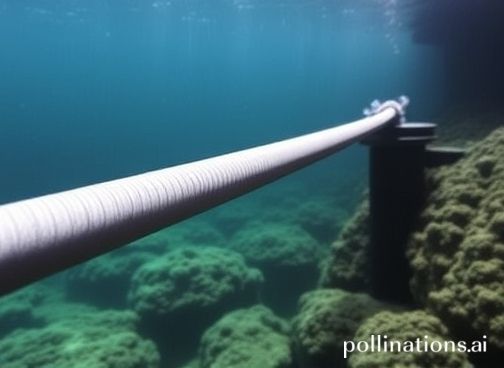Taiwan's Digital Lifeline: Streamlining Undersea Cables for Investment and Security
Boosting Taiwan's Digital Infrastructure: Calls for Faster Permits and Stronger Protection Against Gray Zone Threats

Taipei, April 23 – Taiwan is urged to accelerate its application process for undersea cables to foster greater investment and to reinforce the protection of its crucial underwater infrastructure against potential "gray zone" threats from China, according to the head of the Taiwan Network Information Center (TWNIC).
Speaking at the TWNIC Engagement Forum in Taipei, TWNIC Chairman Kenny Huang (黃勝雄) highlighted the need to encourage more investment in submarine cables, given Taiwan currently hosts only 14 international cables and a few more in development.
Huang has previously emphasized the importance of Taiwan's 14 international and 10 domestic undersea communication cables – carrying 99% of the nation's internet traffic – calling them a "digital lifeline."
While international cables are typically joint ventures, domestic cables are exclusively managed by Chunghwa Telecom, Taiwan's leading telecom provider, under the Ministry of Digital Affairs, which oversees TWNIC.
Huang pointed out that obtaining approval for a new undersea cable involves "a lot of processes," requiring approvals from various government agencies, including the National Communications Commission, the Ministry of the Interior, and even the Ministry of Culture (MOC).
A presentation slide showcased the lengthy approval process at the MOC, taking around eight months for an underwater cultural heritage survey application and potentially 12 months for the report's approval.
Moreover, the slide indicated that Taiwan's permit process for system inspections averages 29 months, significantly exceeding the Asia-Pacific regional average of 14 months.
Huang suggested streamlining the approval process, citing the underwater cultural heritage survey as an example, proposing its submission only if underwater heritage is actually discovered, similar to practices in Japan, the Philippines, and Australia.
Furthermore, Huang addressed the protection of critical underwater infrastructure (CUI), including power cables, oil pipelines, and communication cables, extending from Taiwan's territorial waters to its exclusive economic zone (EEZ) and into the high seas.
He emphasized the need for "new capabilities" given the underwater domain's vulnerability to "gray zone" actions.
"One moment, nothing seems to be happening, and the next, the entire cable is gone," Huang stated, highlighting the potential for stealthy operations using unmanned vehicles and uncrewed vessels.
Huang proposed utilizing a full digital model of the EEZ based on sonar imaging for monitoring the undersea domain, emphasizing sonar as the only viable tool underwater.
If costs are a concern, the model could begin with Taiwan's territorial waters, he added.
When asked by CNA about Taiwan's current ability to defend its CUI, Huang advocated for a national strategy to protect CUI, with priorities based on available resources.
Taiwan has experienced several incidents in recent years where undersea communication cables were damaged or deliberately cut, leading to temporary internet disruptions.
Local authorities have identified some of these incidents as potential Chinese "gray zone" tactics.
Earlier this month, Tainan prosecutors indicted the Chinese captain of a Togolese-registered vessel suspected of intentionally severing an undersea communication cable connecting Taiwan and Penghu in late February.
